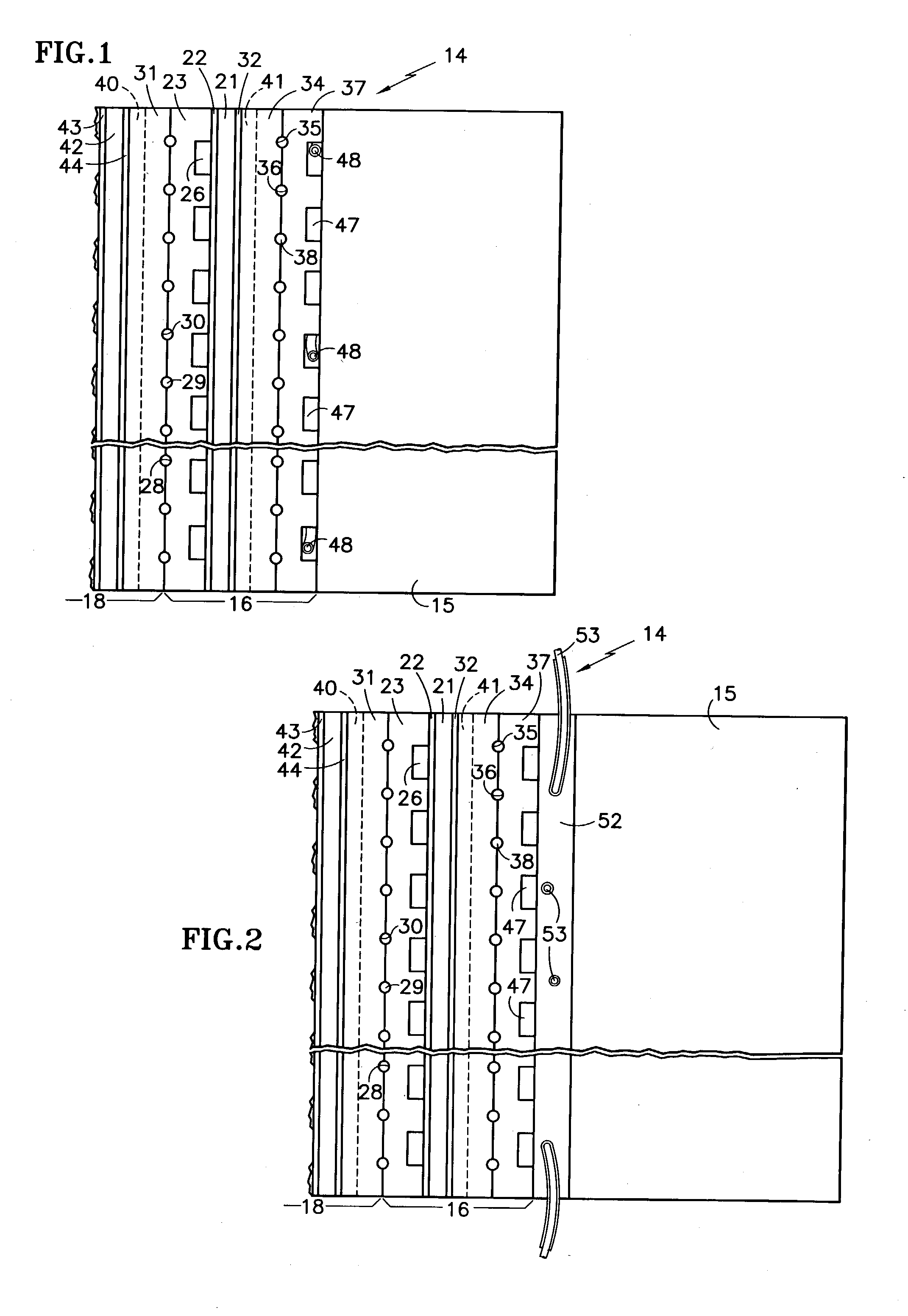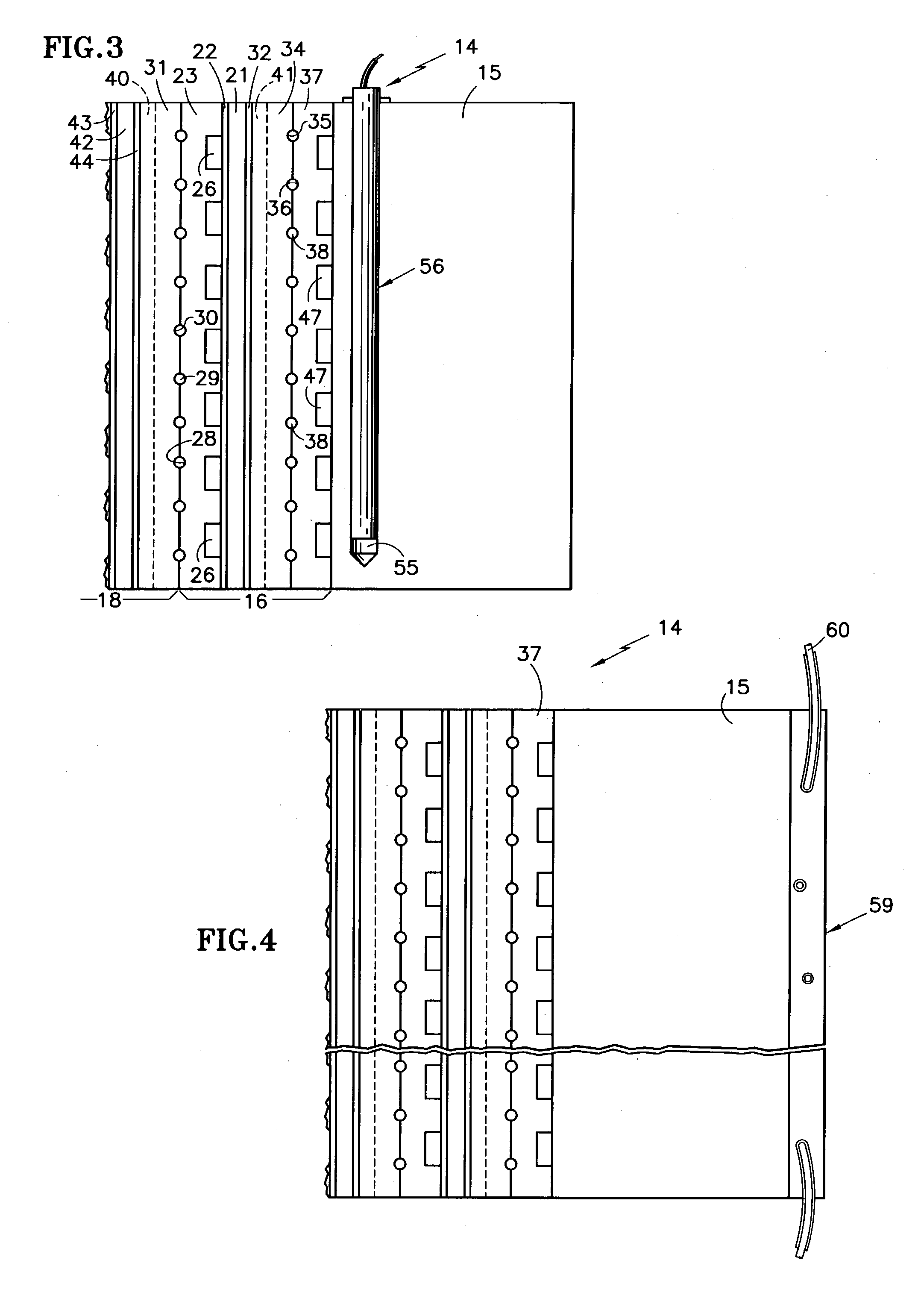Maintaining PEM fuel cell performance with sub-freezing boot strap starts
a fuel cell and subfreezing technology, applied in the direction of fuel cell details, fuel cell control, electrochemical generators, etc., can solve the problems of unacceptably poor performance of the end plate, pronounced only slightly improved performance at the cathode end of the cell stack assembly, so as to avoid performance loss, mitigate or eliminate performance loss, and improve end-cell performance
- Summary
- Abstract
- Description
- Claims
- Application Information
AI Technical Summary
Benefits of technology
Problems solved by technology
Method used
Image
Examples
first embodiment
[0020] The next-to-end fuel cell 18, only partially shown, includes a membrane electrode assembly 42, an anode support plate 43, and a cathode support plate 44, the remainder of this fuel cell being broken away for simplicity. The additional anode water transport plate 37, which is present simply to complete the water passages 38 for the cathode of the last fuel cell 16 does not have any fuel reactant gas flowing in channels 47. In the invention, insulated resistance wire 48 may be threaded through some, as shown, or all, of the channels 47, as necessary, to provide sufficient heat so that the end fuel cell 16 will not be below freezing temperatures during a boot strap startup, or to provide sufficient heat so as to cause recovery of the end cell 16, as the case may be.
second embodiment
[0021] In the invention shown in FIG. 2, a heater plate 52 has insulated resistance wire 53 embedded therein and is disposed between the additional water transport plate 37 and the end plate 15. The wire 53 may be in a zig-zag or serpentine path or in any other suitable shape as may be found desirable in any particular utilization of the present invention.
[0022] In FIG. 3, the end plate 15 has a plurality of holes 55 drilled therein (only one being shown) and a heater 56 disposed in each of the holes. Preferably, the heater 56 is disposed close to that surface of the end plate 15 which is in contact with the additional water transport plate 37. However, the heaters could be in other positions.
[0023] The embodiments of FIGS. 1-3 serve not only to heat the fuel cell itself, either directly or through conduction, but also to provide a temperature gradient which isolates the fuel cell from most or all of the cold mass of the end plate 15.
[0024] In FIG. 4, an electric heater element 59 h...
PUM
| Property | Measurement | Unit |
|---|---|---|
| temperature | aaaaa | aaaaa |
| insulated resistance | aaaaa | aaaaa |
| electric resistance | aaaaa | aaaaa |
Abstract
Description
Claims
Application Information
 Login to View More
Login to View More - R&D
- Intellectual Property
- Life Sciences
- Materials
- Tech Scout
- Unparalleled Data Quality
- Higher Quality Content
- 60% Fewer Hallucinations
Browse by: Latest US Patents, China's latest patents, Technical Efficacy Thesaurus, Application Domain, Technology Topic, Popular Technical Reports.
© 2025 PatSnap. All rights reserved.Legal|Privacy policy|Modern Slavery Act Transparency Statement|Sitemap|About US| Contact US: help@patsnap.com



